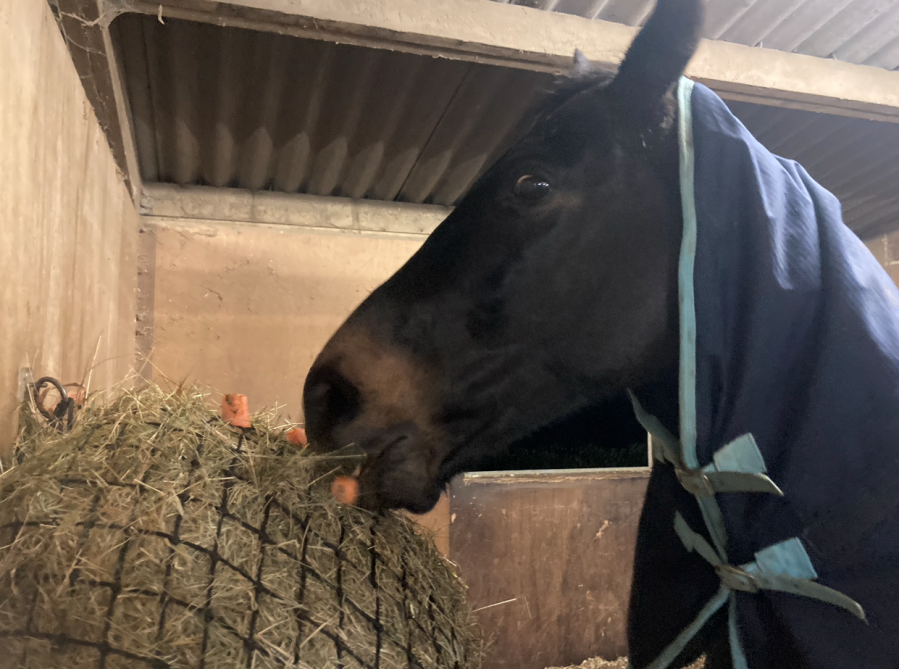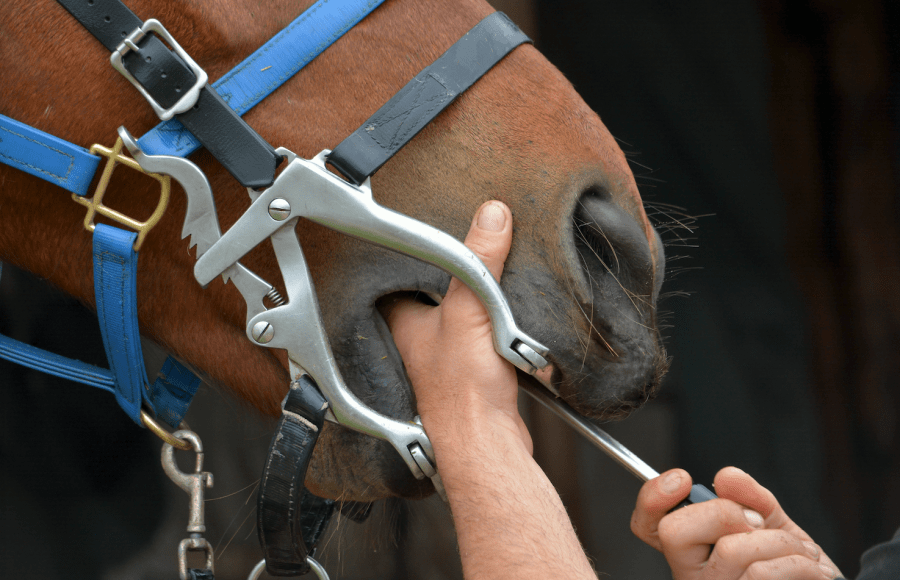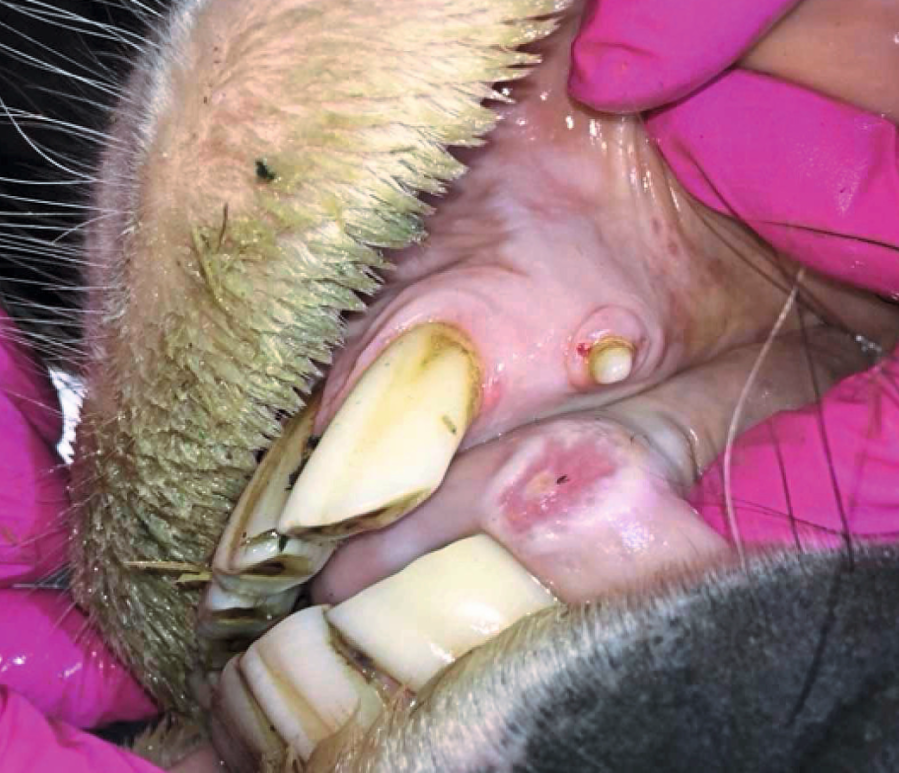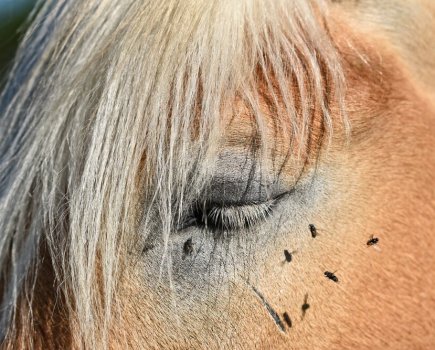When was the last time you had your horse’s teeth checked by a vet or equine dental technician? If you have ever experienced toothache, you will know how painful it can be, as well as the efforts you are prepared to go to in order to relieve the horrendous discomfort.
For you and I, painkillers and an emergency trip to the dentist is likely to swiftly solve the problem. Unfortunately, however, our horses don’t have this same ability to ask for help when their teeth start to hurt.
Regular teeth checks are a vital part of taking care of a horse. For some equines, a yearly check up is enough. In other cases, horses may need to be seen every six months or more often, especially if a problem arises.
Whatever length of time passes between teeth checks, the best way to keep horse teeth healthy and spot potential problems early is to keep on top of those visits.
Routine rasping
During a routine teeth check, your horse may need to have their teeth rasped to remove sharp edges and hooks.
The upper and lower teeth grind against each other when a horse chews tough grasses in the wild and this process naturally wears teeth down.
However, domestic horses typically spend less time grazing and more time chewing hay, haylage and soft feed, which doesn’t have the same effect on teeth.
Consequently, their teeth wear unevenly and sharp edges and hooks are formed in the horse’s mouth. These then rub and catch against the cheeks and tongue, causing pain and abscesses.
In order to file teeth down to an even level, the horse will wear a gag (see main image) which holds their mouth open so that a rasp can be safely inserted.
Unsurprisingly, some horses are not a fan of this and so they are often sedated for the procedure to take place.
Signs teeth are hurting
There are several ways to identify if your horse is having problems with their teeth, and the symptoms tend to depend on the issue.
“Be observant,” advises Dr Melissa Emson, an equine vet and dentist who is a member of the British Association of Equine Dental Technicians (BAEDT).
“Does he normally have a lump on the side of his face and does it disappear? Does he have nasal discharge from one nostril and is that foul smelling and coming from his mouth or the nostril? These are all signs of dental disease.”
Cheek teeth are impossible to view in a horse’s mouth without a speculum, but most owners can lift the lips to look at the gums and teeth around the incisors and canines.
“If the incisors are partially hidden by food material, calculus, or have hay packed between them, your horse will certainly be experiencing gum disease and dental pain,” adds Melissa.
“Have a look at the gum around the teeth. Is it healthy looking or red and inflamed? You may notice small spot-like lesions with pus discharging which suggests more severe disease.”
The carrot test
Offering your horse a carrot is a good indication of incisor health and many owners will remember exactly when it was that their horse was first unable to bite into a carrot.
“It’s a memorable moment, so do mention it at your horse’s next dental examination as it could be a subtle sign of an autoimmune condition that can affect older horses’ incisors and canines,” says Melissa.
“Equine odontoclastic tooth resorption and hypercementosis (also known as EOTRH) can be diagnosed from a simple radiograph which allows for the monitoring of the affected teeth and will detail if extraction is required.”
Very observant owners may notice that their horse eats on only one side of their mouth, or that they chomp (more akin to a crocodile eating) instead of chewing. They are doing this to avoid pain.
“Chewing like this can cause large transverse ridges on the surface of the tooth in addition to the regular enamel overgrowths to the edges of the teeth,” says Melissa.
“This is an uncomfortable mouth as it is, but introduce a bit, a noseband and a contact and this can cause a very painful and explosive response. Some sufferers will remain very still in the contact, however, so you would never know.”
Hiding tooth pain
It’s important to understand that horses are designed to hide dental pain and will carry on eating regardless. So it’s possible that your horse is in pain, but not showing it, which is why regular teeth check ups are so important.
“Their natural diet of grass is very easy to eat with poor dentition,” explains Melissa.
“Horses use their incisors to grasp food and pull it away, whereas their cheek teeth grind food down to a short enough length for the gut to digest.
“While grass is abundant they maintain their condition well, so a lot of my clients are totally unaware of any issues and are absolutely devastated when I show them the problems inside their horse’s mouth.
“Those horses will always find a way to eat, so by the time they are showing signs of discomfort, they have been struggling for a while. This is why we need to be proactive,” adds Melissa.
Winter is the most common time period for horses to show signs of dental discomfort.
“After a summer out at grass, horses can be suddenly introduced to hay, which requires a stronger power stroke to grind it down compared to softer grass,” explains Melissa. “Minor dental pain which was bearable at grass may now become less so when under this new winter feeding regime.”
Common causes of dental disease
Common causes of dental disease in horses include:
- Teeth with routine sharp enamel overgrowths that cause trauma to the cheek or tongue.
- Overgrown teeth due to the opposing tooth being absent or displaced.
- Diastemas (gaps) between the teeth with food packing and subsequent painful gum disease.
- Diseased teeth; ie, infundibular disease, or pulp cavity defects potentially leading to fractures abscess/sinus infection.
- Fractured, displaced, missing, additional, or loose teeth.
- Smooth teeth seen in older horses which makes it difficult for them to chew coarse, fibrous foods.
- Tooth decay, or caries, results in a rough surface against soft tissue/the cheek/the tongue.
- Unerupted/blind, unusually large, or displaced wolf teeth.
Is sugar bad for horse teeth?
Just as too much sugar in a human’s diet is bad for their teeth, the same is true for the horse and it can cause dental issues. Tooth decay, also known as dental caries, is the result of bacteria metabolising sugars which produce acid as a by-product.
“The acid attacks the outer layer, the cementum of the teeth, leaving a rough surface,” explains Melissa. “Slide your tongue over the surface of your teeth and they should feel smooth. Now imagine your teeth feeling like the honeycomb centre of a Crunchie bar — rough, brittle and gritty. That is what peripheral cemental defects (PCD) feels like.”
For this reason, it is important to feed appropriately for the work your horse is doing. Check the sugar quantity in feeds and avoid too many sugary licks and treats. Equine dental technician Penny Brownings agrees.
“It’s true that giving stable and field licks can be bad for your horse’s teeth. The licks you give your horse for treats are predominantly bound with sugar and sugar syrup,” she says. “We’re seeing an increased number of horses with tooth decay due to the fact they’re being fed more sugary treats and are spending less time grazing as they would do naturally.
“This unnatural dietary change causes an imbalance in the pH of your horse’s teeth, which can cause dental caries (tooth decay). Studies are being carried out at Edinburgh University on the effects of pH components fed to your horse, with sugar being one of the main influencers.”
Alternatives to sugary treats
Penny adds that she wouldn’t recommend feeding treats of any kind to your horse. If you want to give a horse something ‘extra’ to keep them entertained, she suggests one of the following instead:
- Himalayan salt lick on a string.
- Vegetables, such as parsnips and swedes, hung up like a kebab.
- Carrots hidden in hay in a double-netted haynet so your horse has to search to find them.
- Split hay into two hay nets, hanging one so it swings, and one in its usual place.
“These are much healthier alternatives to treats, which horses really don’t need, and will help prevent tooth decay in your horse,” states Penny.

Pesky plaque
Veterinary equine dental technician Vikki Fowler often has to remove plaque build up from a horse’s teeth.
“It’s super easy and quick to do, and it makes a massive difference,” she says. “One particular horse I visited had plaque build up on his canine teeth. Because these teeth aren’t used to eat, the mineral deposits accumulate over time and aren’t removed naturally by the process of the horse eating roughage.
“From my experience, I’ve noticed that horses who drink from natural sources, such as bore holes, natural springs and streams, tend to get these build ups more significantly due to the larger amounts of minerals in the water. If not dealt with, this plaque build up causes localised gingivitis and can lead to gum recession.
“When plaque becomes large, it pushes into the tongue and can affect bit placement too, so it is important that it is removed for the horse’s comfort and mouth health.”
How to keep horse teeth healthy
Melissa advises doing the following when it comes to feeding a horse in order to keep their teeth healthy:
- Young horses who are turned out 24/7 have considerably better wear patterns and healthier mouths than those standing in a stable eating from haynets, so this gives them a great start to life.
- Horses are designed to eat from the floor and will wear their teeth significantly better if you feed from there.
- Undertake research to find out what feed is appropriate for your horse, and whether it is really essential to buy all those supplements and sugary treats.
- Source a finer meadow hay for older horses and provide hay replacers, such as fibre nuts/alfalfa nuts soaked in a trug bucket alongside hay as an alternative.
- If your horse has diastemas (gaps), ensure that their feed doesn’t contain chaff which can lodge in the gaps.
- Listen and follow instructions after any dental examination. However, be realistic when it comes to management changes and discuss what works for you and your horse.
- General health is also important and I like my older clients to be regularly tested for Cushing’s, or monitored if on treatment.
- If you are able to brush your horse’s incisors and canines with a soft toothbrush, I recommend that you do so in order to remove any calculus or feed that may be lodged.
How you can help
“The aim is for the horse to eat using the whole of his mouth comfortably so that, longevity-wise, his teeth last for years,” says Melissa. “What we don’t want is for the horse to eat in just one small area of his mouth where he finds it comfortable and overly wear down those teeth.”
Because horses don’t show their dental pain to their connections particularly obviously, the most important course of action for any owner is to have their horse’s teeth thoroughly examined regularly by a qualified BAEDT technician, or an equine vet, every six to 12 months.
Some horses may require checks more often than this; follow your vet or dentist’s advice. Regular examinations allow for early detection of new problems which can be addressed immediately with a plan between you and your vet or equine dental technician.
Main image © Shutterstock









